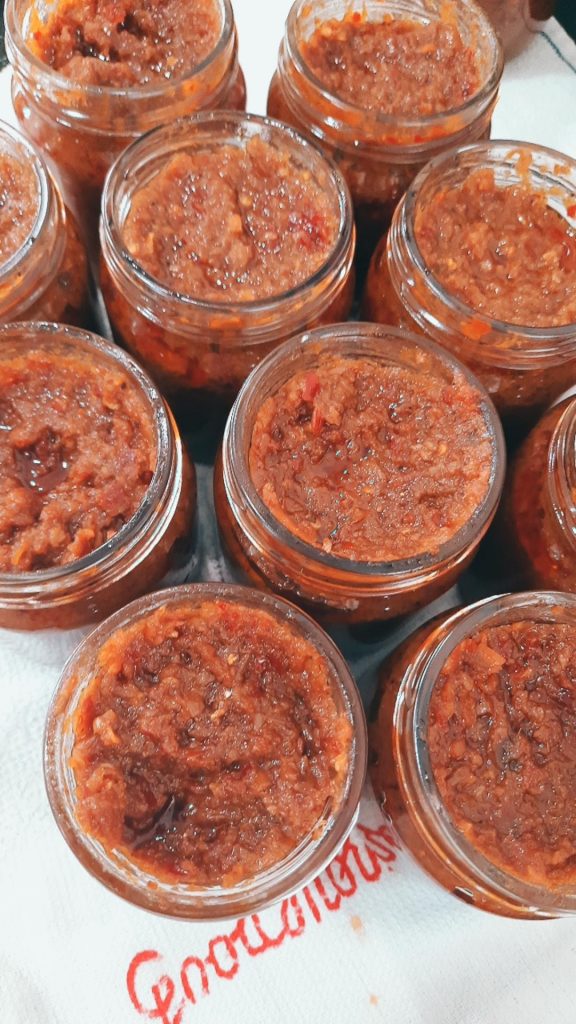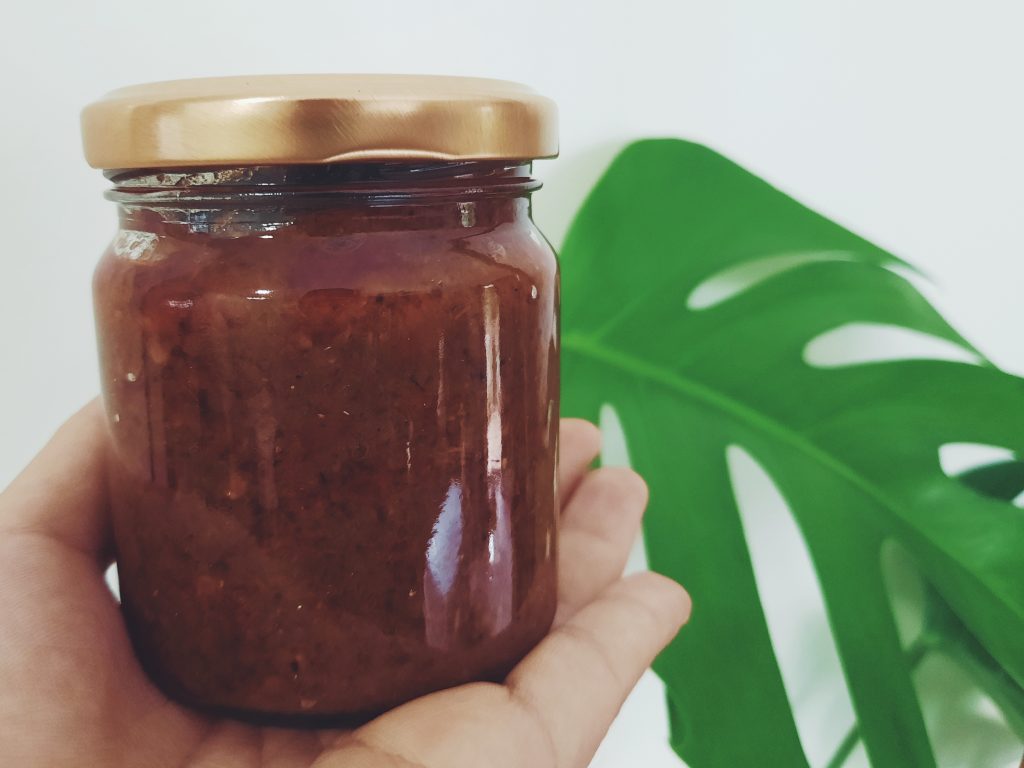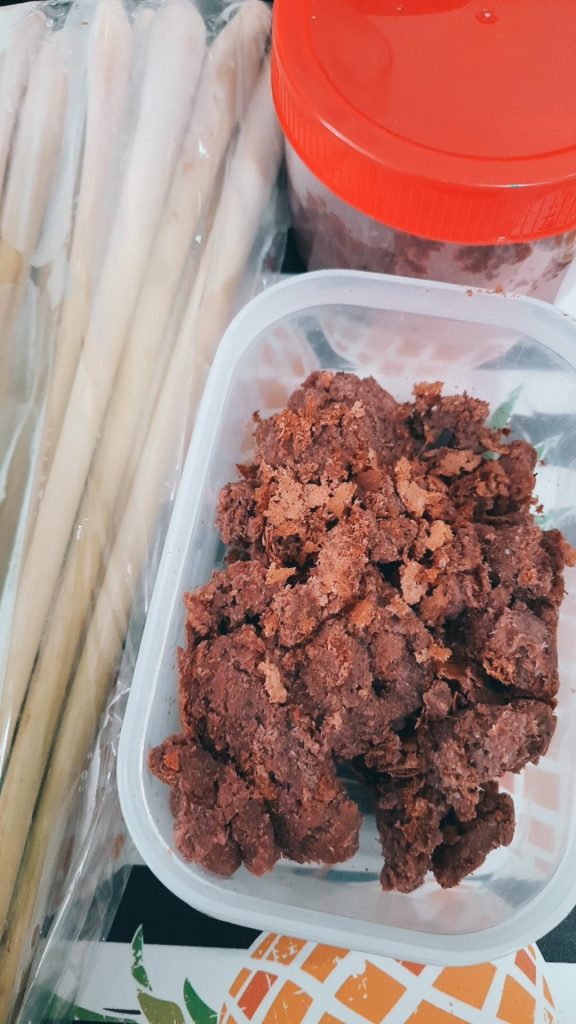
As an overseas Singaporean, one of the things I miss the most is Singapore-style chilli dip. I love sambal belachan and Singaporean/Malaysian/Indonesian meals just feel so incomplete without it. We have been surviving on bottled sambal that we brought from Singapore, but bringing it over wasn’t possible anymore with covid border closures. One day, Jason missed nasi lemak (coconut rice) so much that we decided to make it at home. And how can we have nasi lemak without sambal?!?! So I finally took the plunge to start making my own sambal belachan. And I must say, once you start having homemade samabal belachan, there is no turning back to bottled ones… Thank you spice n’ pans for the awesome recipe!
But what is sambal belachan exactly? Sambal is an Indonesian loanword that simply means “chilli”, and belachan refers to shrimp paste. Sambal is a staple of Southeast Asian households, essential in cuisines of Indonesia, Malaysia and Singapore. In Singapore and Malaysia, we like to fry chilli and toasted shrimp paste together to make sambal belachan. (Thank you, Wikipedia)
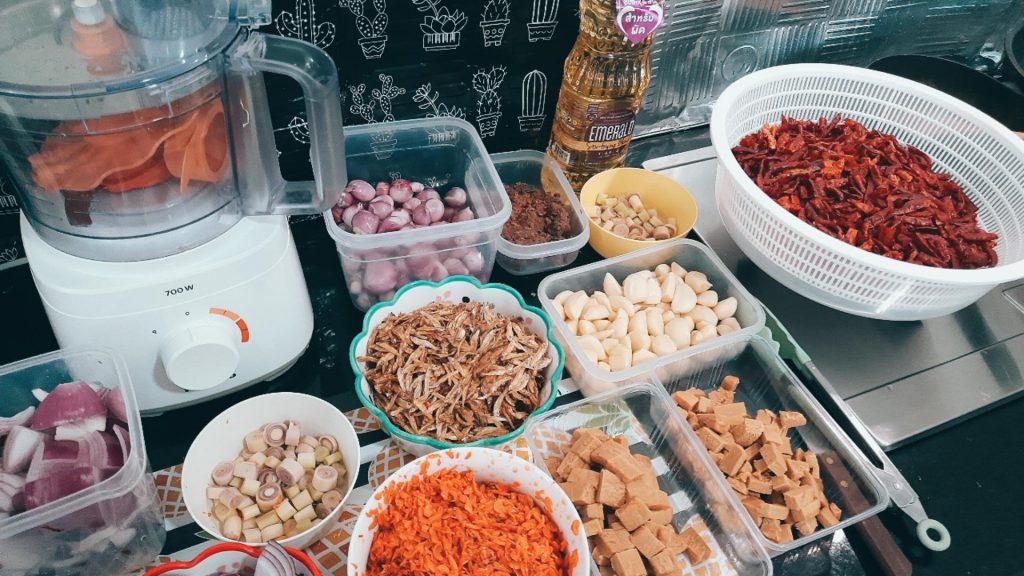
Are you an overseas Singaporean too and missing food from our home country? Here are some of our favourite ideas on how to improvise with sambal belachan when cravings for Singaporean food hit!
Sambal Belachan salmon
We haven’t been able to find stingray in Chiang Mai yet but the craving for grilled fish with sambal is real. Jason had a brainwave and suggested we make sambal salmon instead. It’s super shiok! And maybe a little more nutritious?
Fish is not cheap here, so we go budget by using frozen salmon belly from Makro. Grilling it in my airfryer made it fuss-free and easy but you can do it however you prefer.
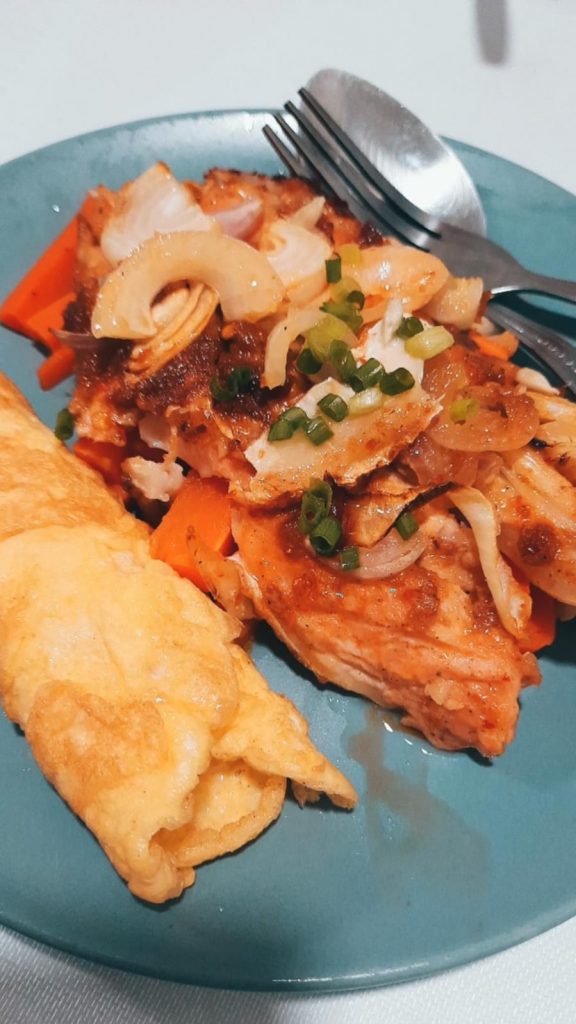
- Pat salmon dry with paper towels.
- Marinate salmon with some salt, sesame oil, soya sauce, chopped garlic, chopped shallots, and sambal belachan for at least 30 mins.
- Put everything in aluminium foil, salmon skin side down, and dollop some more sambal on top. Top with some sliced yellow onion. Wrap the foil into the packet (like how we do it at East Coast Park barbeques).
- Airfry it 180 degrees celsius for 10 minutes.
- Open the top of the packet and airfry for another 10 minutes for the grill effect.
- Serve with lime and more sambal!
Sambal prawns and sotong
An ode to good ol’ zi char (literally “stir and fry” dishes) is our version of stir-fried sambal prawns and sotong (squid). Also very easy to make with all the kitchen staples.
- Marinate deshelled/deveined prawns and sliced sotong with some salt, pepper, sesame oil and cornstarch (just a bit).
- Chop and slice up tomatoes, onions, shallots, and garlic.
- Heat up some oil in a pan. Stick your spatula in to see if the oil is hot enough – bubbles will start forming where the oil meets the spatula.
- Over medium-high heat, quickly fry the prawns and sotong until it’s browned and about 80% cooked. Remove it from the oil. Don’t skip this step!!! It keeps the prawns and sotong juicy and springy to the bite.
- Fry the tomatoes, onions, shallots, and garlic until the tomatoes soften.
- Add in some sambal and fry it a little
- Add the prawns and sotong back into the pan and fry it all together. Add some sugar and season according to your preference. You can add some water to make the dish more saucey.
- The dish is ready when the prawns are c-shaped. Serve with some chopped spring onion.
Wanton Mee
Wanton mee is definitely more time-consuming, so this is our hack when we want some. We’d head to a noodle shop and takeaway dry dumpling noodles with no sauce. At home, toss the noodles with some sambal, dark soy sauce, and vinegar. Mmmmm.
Other ideas
Honestly, sambal goes with almost anything savory. We have it with rice, grilled chicken breast, fried long beans, kang kong, fried chicken, eggs, … This list has no end.
Pro Tip: Sambal Cubes
If you received more sambal belachan than you can finish in a month, freeze it to keep it for longer. I usually make huge batches and freeze them in ice-cube trays. Once frozen, pop them out and keep the cubes in a Ziploc bag. When you need to use them, you can microwave/steam to soften the cubes and release the aroma. Super convenient sambal cubes whenever you need them without worrying about it spoiling fast! I use this trick for other sauces like chicken rice chilli and tomato paste as well.
If you are a fan of spicy food, check out our Tom Yum Wings recipe and tutorial! We love sharing our love for food 😉
